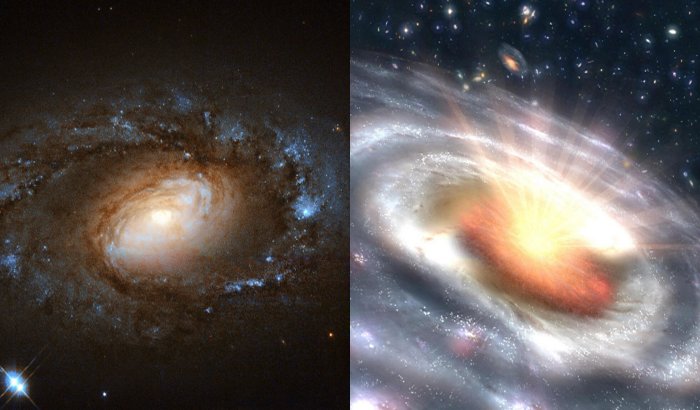Eddie Gonzales Jr. – MessageToEagle.com – A team of astronomers observed six mild-mannered LINER galaxies suddenly and surprisingly transforming into blazing quasars—home to the brightest of all active galactic nuclei.
The observations could help demystify the nature of both LINERs and quasars while answering some burning questions about galactic evolution, Based on their analysis, the researchers suggest they have discovered an entirely new type of black hole activity at the centers of these six LINER galaxies.

“For one of the six objects, we first thought we had observed a tidal disruption event, which happens when a star passes too close to a supermassive black hole and gets shredded,” Sara Frederick, a graduate student in the University of Maryland Department of Astronomy and the lead author of the research paper, said in a press release.
“But we later found it was a previously dormant black hole undergoing a transition that astronomers call a ‘changing look,’ resulting in a bright quasar. Observing six of these transitions, all in relatively quiet LINER galaxies, suggests that we’ve identified a totally new class of active galactic nucleus.”
Changing look transitions have been documented in other galaxies—most commonly in a class of active galaxies known as Seyfert galaxies. By definition, Seyfert galaxies all have a bright, active galactic nucleus, but Type 1 and Type 2 Seyfert galaxies differ in the amount of light they emit at specific wavelengths.
Frederick and her colleagues also performed follow-up observations on the objects with the Discovery Channel Telescope, which is operated by the Lowell Observatory in partnership with UMD, Boston University, the University of Toledo and Northern Arizona University.
“Our findings confirm that LINERs can, in fact, host active supermassive black holes at their centers,” Frederick said.
“But these six transitions were so sudden and dramatic, it tells us that there is something altogether different going on in these galaxies. We want to know how such massive amounts of gas and dust can suddenly start falling into a black hole. Because we caught these transitions in the act, it opens up a lot of opportunities to compare what the nuclei looked like before and after the transformation.”
Original story – here
Written by Eddie Gonzales Jr. – MessageToEagle.com Staff






